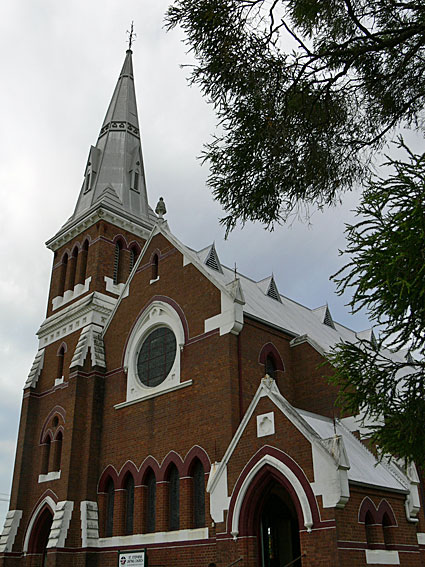
[Photograph by John Maidment (October 2007)]

[Photograph by John Maidment (October 2007)]
Historical and Technical Documentation by Geoffrey Cox
© OHTA 2007, 2011, 2013 (last updated June 2013)
The foundation stone for the first Presbyterian church in Sussex Street, which is now the site of St Stephen's hall, was laid in June 1865 by Mr Andrew Melville, a prominent civic leader in Maryborough. The present church, which was opened in November 1881,1 was designed by the architect Benjamin Joseph Backhouse, who settled in Brisbane in 1861.2
The congregation had worshipped to the accompaniment of a harmonium from 1869, but the trustees were empowered in 1889 to install a pipe organ upon receiving a bequest following the death of Andrew Melville's sister, Miss Janet Melville, in 1888.3 The instrument was named the 'Melville Memorial Organ', commemorating "the liberality of Miss Janet Melville and other members of the family."4
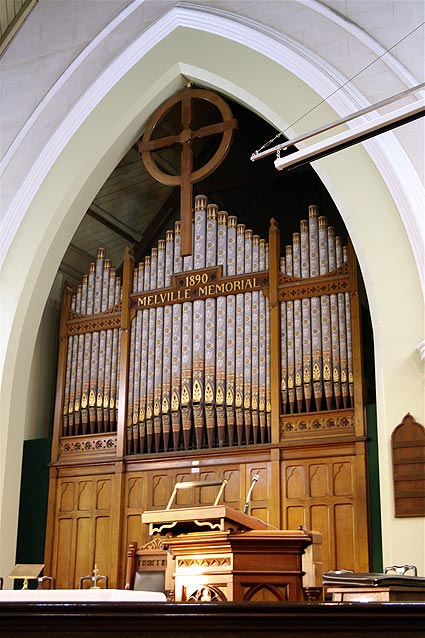
[Photograph by Trevor Bunning (October 2007)]
The opening of the instrument on 12 April 1891 was reported in the local press as follows:
The fine new organ of the Presbyterian Church was opened formally yesterday, and created a very favorable impression. At the morning service there was an overwhelming congregation, and a very interesting and impressive service was given. The Rev. J. I. Knipe referred in a few well chosen remarks to the advent of the organ, and dwelt on the beauty of music as a means of praise, and its emphatic sanction in that respect throughout the Scriptures. If it were right to praise God with music, then it should be the very best they could procure. Subsequently he delivered a good sermon on Human Needs and God's supply. Mr. S. G. Benson, R.A.M., of the Presbyterian Church, Brisbane, and a noted colonial player, presided at the organ, to which he did full justice, and which it may be fairly said reciprocated all his efforts. The result was excellent, and the rich and blended torrent of harmonies at times charmed and thrilled. It has at the same time great power and great sweetness; notes can be played like a whisper, or break on the ear with a thunderous crash, with all the immediate gradations and variations. Mr. Benson played as an opening offertory Mendelssohn's Adagio, with beautiful effect; the opening voluntary, however, an andante by Bennett, probably found most acceptance; a sweet gentle composition. In strong contrast to this was the concluding offertory, Handel's No. 4 concerto, a vigorous piece of most difficult execution, and needing most careful modulation to be effective. Mr. Benson played it finely, but the effect was somewhat marred by the congregation walking out of church during its recital. In the evening there was another large congregation, and the Rev. J. I. Knipe preached a scholarly sermon on "St. Paul's Determination." The choir, as in the morning, was strong, and sang splendidly all through. Mr. Benson opened with a soft andante by Smart, and at the offertory played the Evening Prayer (Smart) with great sweetness and taste, concluding with an allegretto by Mendelssohn. It must be added that Mr. Benson accompanied all the hymns in a masterly fashion, and the effect of the organ in the hymn "Onward Christian Soldiers" and the final hymn of the evening service was soul-stirring. There will be a grand organ recital and concert in the church on Tuesday evening, when Mr. Benson may be again heard, and most of the leading amateurs will sing, in addition to choruses by the choir.5
Despite the success of the opening services, the introduction of the organ was dogged by controversy. This reflected widespread differences of opinion in the Presbyterian Church at the time concerning the use of organs. Some of the congregation reportedly left the church, and the harmonium player, Edward Woodrow (who was also the choirmaster), refused to become the official organist.6 The Maryborough correspondent for the Brisbane press reported that Benson spent a full ten days in Maryborough giving recitals, and that it had been "seven long years since such music as he gave us was produced in Maryborough."7 Not long after Benson's visit, Maryborough audiences were treated to a recital by the visiting popular English organist, W. H. Jude, who attracted a large audience at St Stephen's on 9 November 1891.8
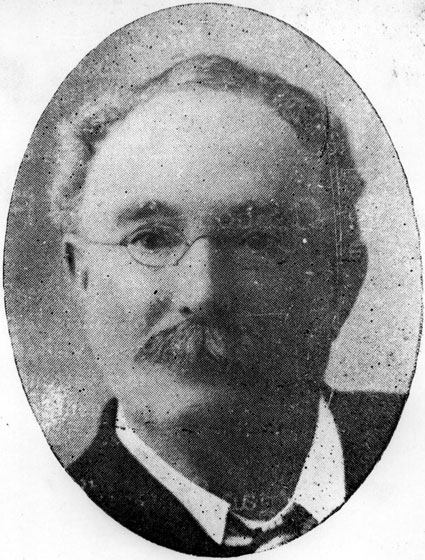
|
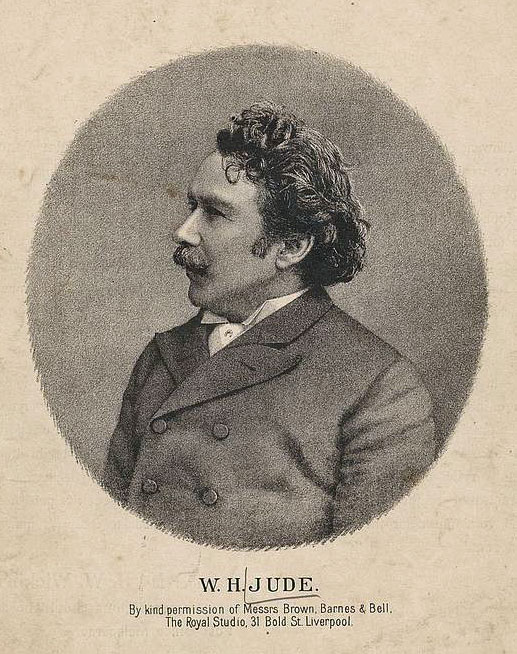
|
|
[Photograph: John Oxley Library, State Library of Queensland] |
[Photograph: National Library of Australia] |
The organ was built in 1890 by Alex Young & Sons of Manchester. It was described in December that year as having been "recently shipped . . . for erection in the Presbyterian Church, Maryborough" with the following specification:
| GREAT Open diapason St. diap & clarabella Dulciana Gamba Principal Harmonic flute Fifteenth Mixture Trumpet SWELL Double diapason Open diapason Hohl flöte Salicional Vox célestes Principal Mixture Cornopean Oboe PEDAL Open Diapason Bourdon COUPLERS Great to Pedal Swell to Pedal Swell to Great |
8 8 8 8 4 4 2 3 ranks 8 16 8 8 8 8 4 2 ranks 8 8 16 16 |
[gvd bass] [gvd bass] [apparently marked 8-foot] |
[Swell Tremulant]
3 composition pedals to Great
3 composition pedals to Swell
[Compass: 56/30]
[Hitchdown lever swell]
[Mechanical action] with tubular pneumatic action to pedal organ
Polished oak case, with decorated pipes.9
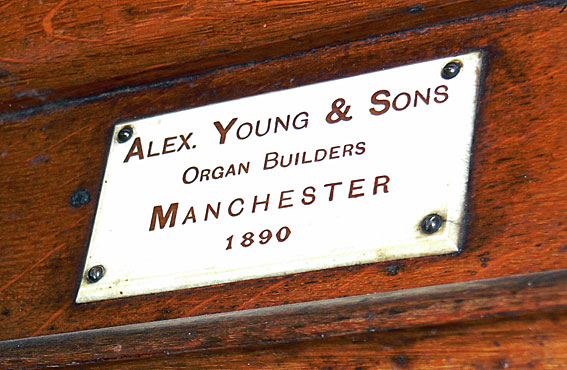
The builder's nameplate on the organ
[Photograph by John Maidment (October 2007)
The pitch of the Pedal Bourdon was published as 8-foot in 1890, and similarly described by the late Mr Percy Brier,10 although it was recorded as 16-foot in at least two other sources.11
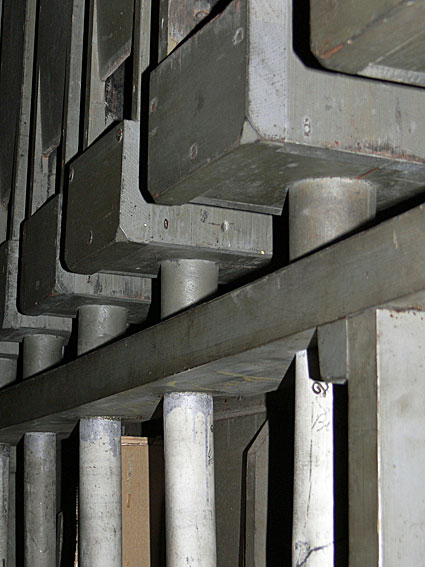
The Pedal Open Diapason with zinc conveyances
[Photograph by John Maidment (October 2007)]
Like the organ at Wesley Methodist Church, Maryborough, the organ at St Stephen's was originally blown by a hydraulic engine. This was replaced successively by a gas engine in the 1900s and an electric motor in the 1920s. The water motor from Wesley Church and the gas engines from both St Stephen's and St Paul's Churches in Maryborough are reported to have been preserved by local engineer, Peter Olds.12
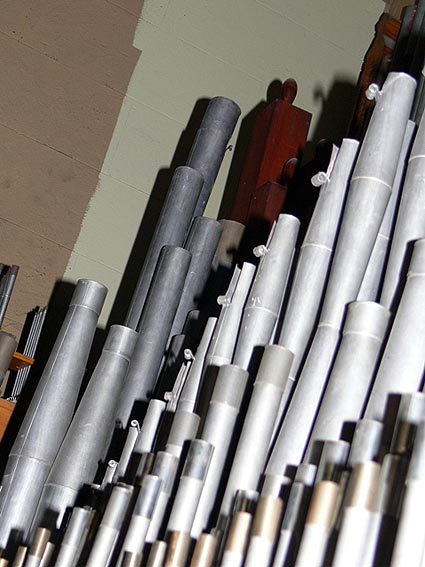
Pipes of the Labial Clarinet (1939)
[Photograph by John Maidment (October 2007)]
The addition of a "Labial Clarinet" to the organ is recorded by Whitehouse Bros in August 1939,13 apparently replacing the original Trumpet 8 on the Great.
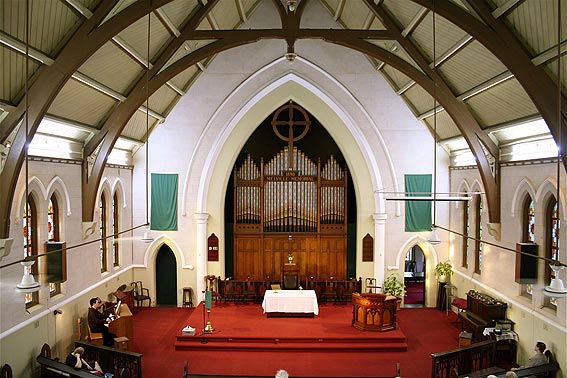
[Photograph by Trevor Bunning (October 2007)]
In conjunction with church centenary celebrations in 1963, the instrument was electrified by H.W. Jarrott in 1966. A new detached console was provided at this time, four pedal stops were added by extension, and 140 pipes were added "to complete ranks of pipes on the Great and Swell organs".14 The current specification is recorded here in full:
GREAT
Open Diapason Claribel Gamba Dulciana Principal Harmonic Flute Fifteenth Mixture Labial Clarionet SWELL Double Diapason Open Diapason Hohl Flute Salicional Vox Celeste Principal Mixture Cornopean Oboe PEDAL Acoustic Bass Open Diapason Bourdon Bass Flute Principal Fifteenth COUPLERS Great to Pedal Swell to Pedal Swell to Great Swell Super Swell Sub Swell Unison Off Swell Super to Great Swell Sub to Great |
8 8 8 8 4 4 2 III 8 16 8 8 8 8 4 II 8 8 32 16 16 8 8 4 |
[gvd bass] [Ten. C] [gvd bass] A A B B A A |
[1939] [1966] [1966] [1966] [1966] [1966] [1966] [1966] [1966] [1966] |
Swell Tremulant
Detached console
Electro-pneumatic action
Compass: 61/30
Balanced swell pedal
4 pistons to Great Organ
4 pistons to Swell Organ
3 pistons to Pedal Organ.15
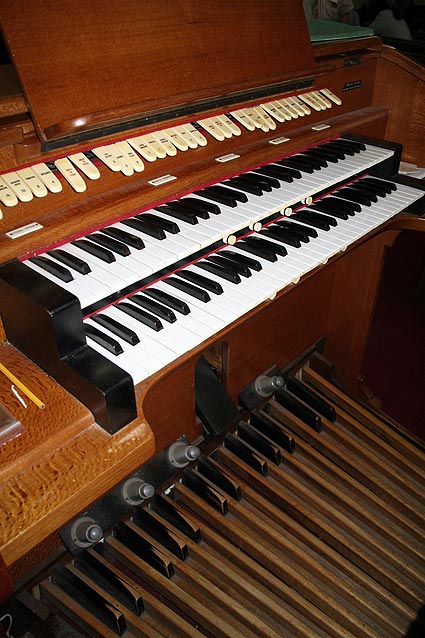
Detached console added by Jarrott in 1966
[Photograph by Trevor Bunning (October 2007]
Tuning slides were fitted by H.W. Jarrott in 1991 at the same time as making minor repairs.16 Further repairs were undertaken in 1997 by Ian D. Brown & Associates, including the further fitting of tuning slides as a protection against damage to the soft metal pipes. In 2001-02 Ian Brown revoiced the Swell and Great stops, and the grooved bass of the Great Dulciana was converted to fully electric action.17
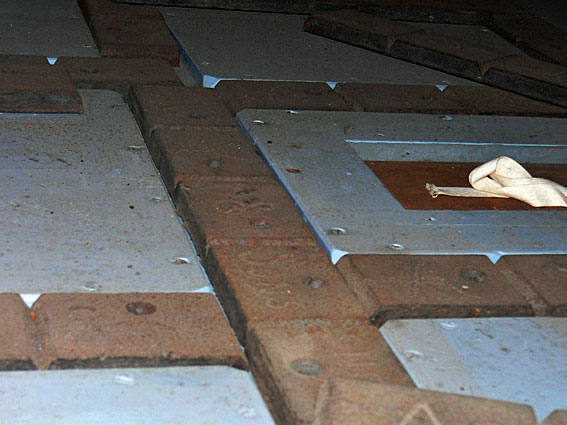
Double-rise bellows and cast-iron bellows weights
[Photograph by John Maidment (October 2007)]
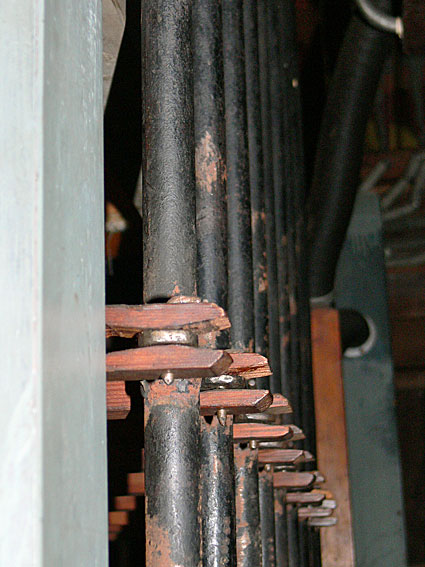
Remnants of the mechanical stop action
[Photograph by John Maidment (October 2007)]
This organ retains its original windchests, double-rise bellows and even the remnants of the mechanical stop action. It thus exhibits a reasonable degree of integrity, and could conceivably be restored with mechanical action, should this be deemed appropriate. The carved oak case and decorated façade pipes are of exceptional quality and originality. It is the only surviving Alexander Young organ in Australia.
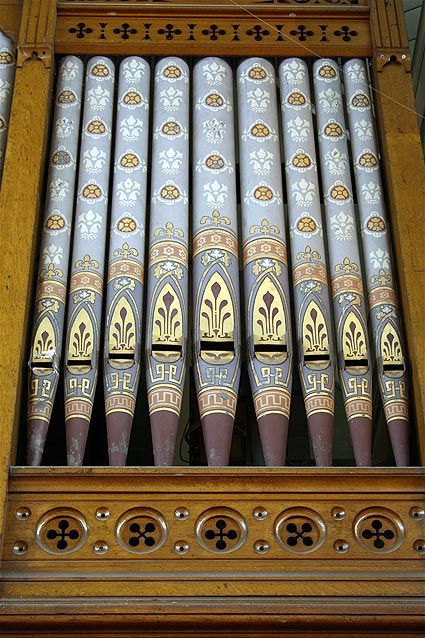
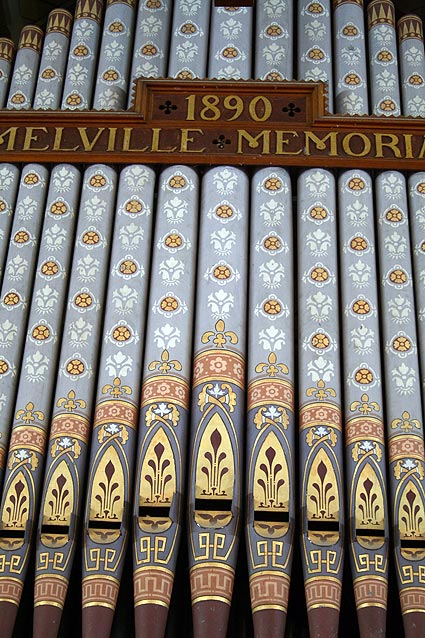
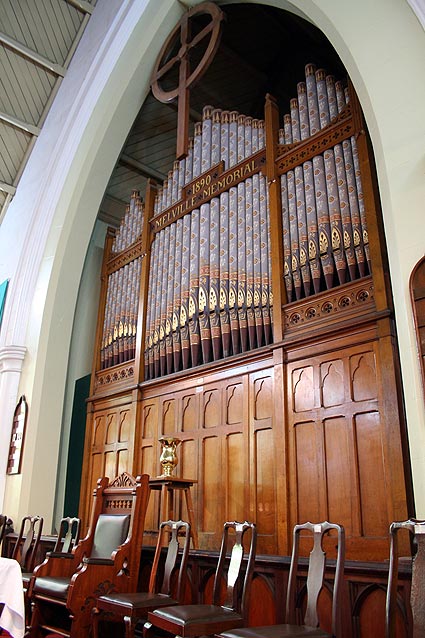
[Photographs by Trevor Bunning (October 2007)]
______________________________________________________________________
1 The Organ Voice, vol. 27, no. 3 (September 2001), pp. 8-9 [from a booklet produced in 1991 to celebrate the Centennial of the organ].
2 Donald Watson & Judith McKay, Queensland Architects of the 19th Century: A Biographical Dictionary (Brisbane: Queensland Museum, 1994), pp. 10-13.
3 The Organ Voice, vol. 27, no. 3 (September 2001), op. cit.
4 Richard Bardon, The Centenary History of The Presbyterian Church of Queensland (Brisbane: W. R. Smith & Paterson, 1949), p. 242.
5 The Maryborough Chronicle (13 April 1891), p. 2.
6 The Organ Voice, vol. 27, no. 3 (September 2001), pp. 8-10.
7 The Brisbane Courier (1 June 1891), p. 6. The reference to "seven years" presumably alluded to the opening of the organs at St Paul's Church and Wesley Methodist Church in Maryborough in 1884.
8 The Brisbane Courier (10 November 1891), p. 5.
9 Musical Opinion & Music Trade Review (1 December 1890), p. 99. Details in brackets are derived from later sources.
10 Organ specifications collected by the late Mr Percy Brier (d.1970), supplied by courtesy of Dr R. K. Boughen.
11 Collected Organ Specifications of Bernie Brohan (c.1952) & Notebooks of Mr E. R. Salisbury.
12 The Organ Voice, vol. 27, no. 3 (September 2001), p. 11.
13 Whitehouse Bros Ledger (1922-1940), p. 542.
14 Personal communication to G. Cox from H. W. Jarrott, c.1974; St Stephen's Centenary Booklet, 1863-1963, p. 23, supplied by Rev. N. T. Barker of Toowoomba, formerly of Maryborough.
15 Specification noted by G. Cox, July 1974 & October 2007.
16 The Organ Voice, vol. 19, no. 3 (December 1991), p. 55.
17 The Organ Voice, vol. 23, no. 2 (June 1997), p. 28; The Organ Voice, vol. 23, no. 4 (December 1997), p. 27; The Sydney Organ Journal, vol. 28, no. 2 (Winter 1997), p. 24; The Organ Voice, vol. 27, no. 3 (September 2001), p. 25; The Organ Voice, vol. 28, no. 1 (March 2002), p. 28; The Sydney Organ Journal, vol. 32, no. 4 (Spring 2001), p. 39; The Sydney Organ Journal, vol. 33, no. 4 (Spring 2002), p. 46.
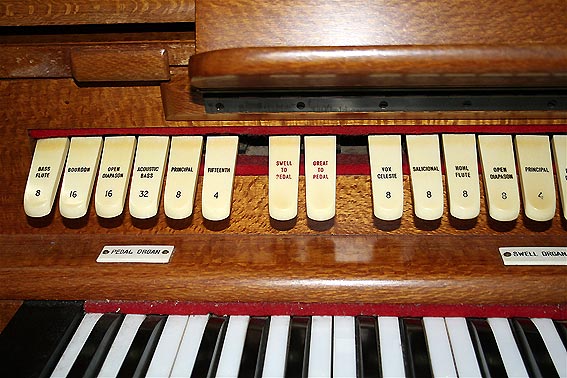
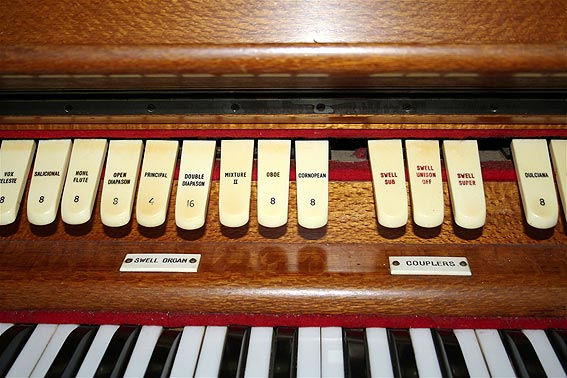
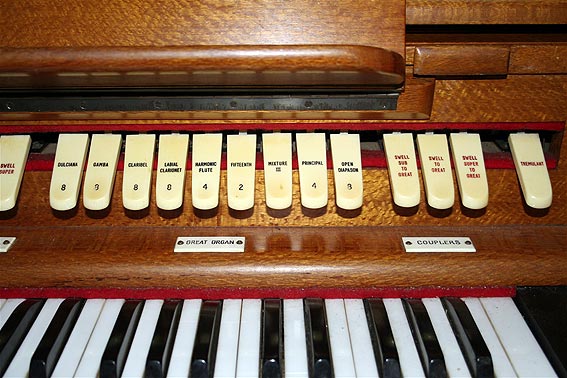
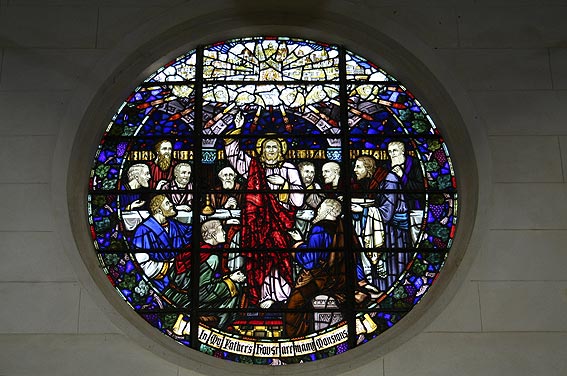
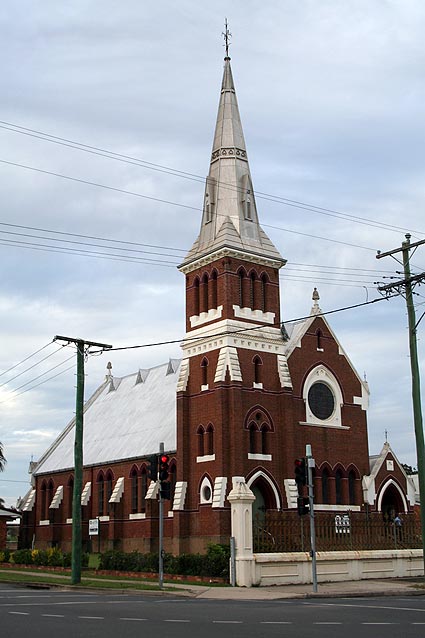
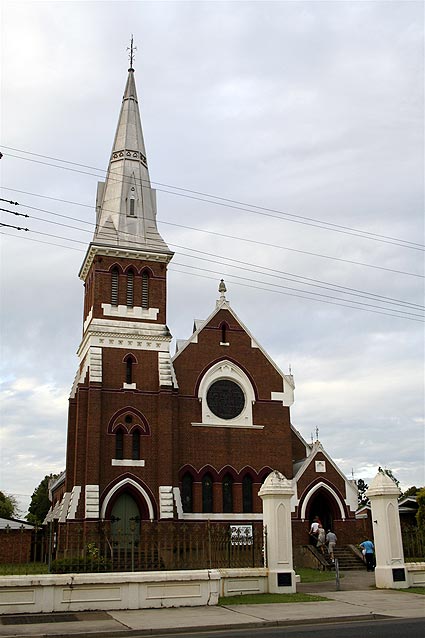
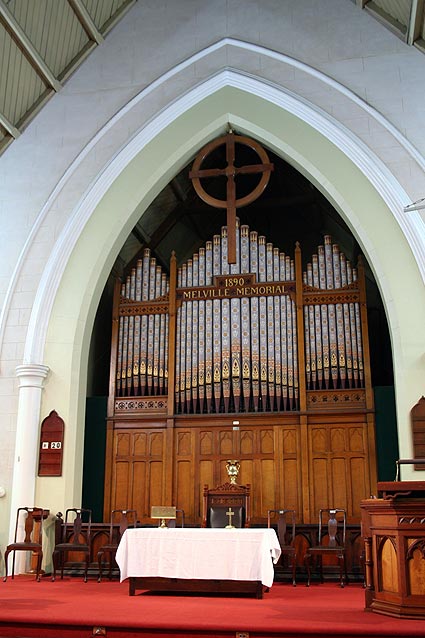
[Photographs by Trevor Bunning (October 2007)]